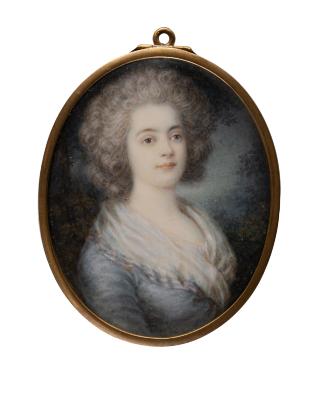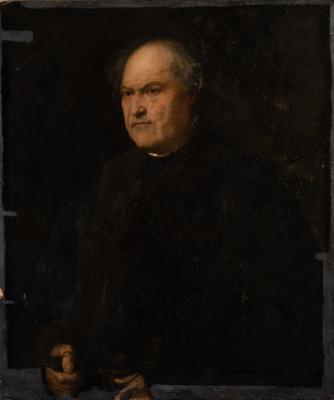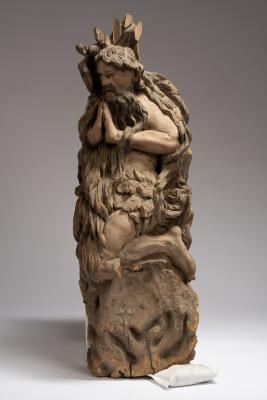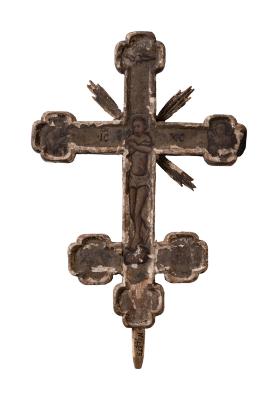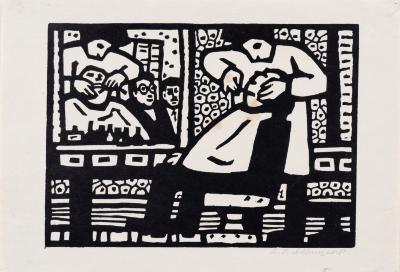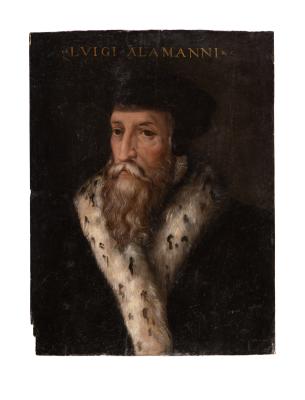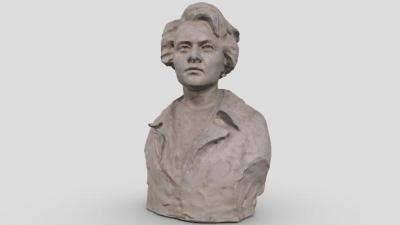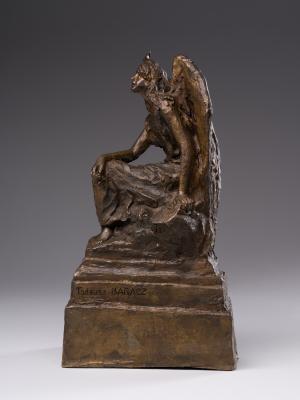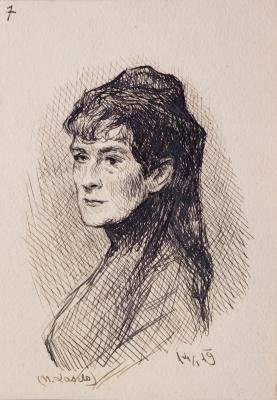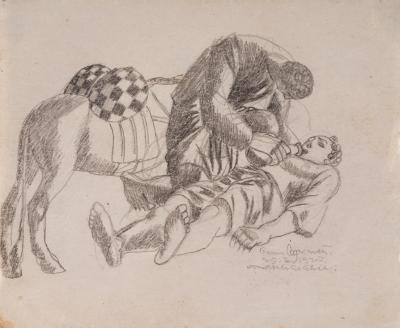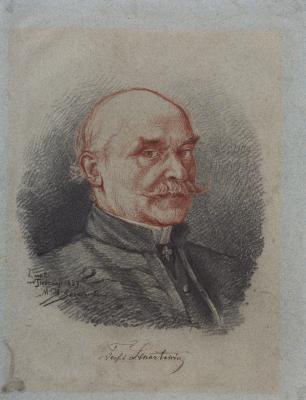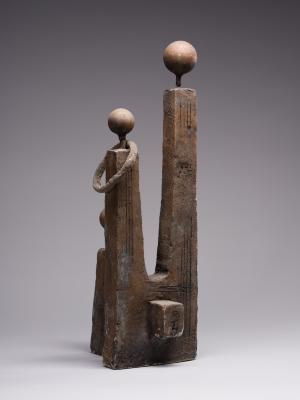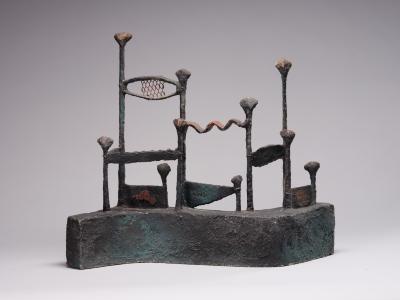The work is from the Roman series. Similar variants to the Lviv one are known from engravings dated 1809 and 1815. The Lviv composition is simplified; less attention is paid to architectural details and characters' figures. It is a multi-figure composition of a grotesque type. In the centre, a mother sits on the podium by the wall, picking head lice from her son's hair. He closed his eyes and put his head on her knees. In her turn, the eldest daughter is looking for the parasites in her mother's head; she is standing on the podium behind her. The youngest child, tied with a strap to a rod nailed into the wall, looks exceptionally funny; the girl is sucking her finger thoughtfully, pulling the strap loop with her weight. An ordinary and a bit damaged wall of the house, with fragments of windows at the top, serves as the background for the main part of the work. Only on the left, where the wall ends, is a woman depicted with two spindles in her hands; she is wearing a traditionally folded flattop headscarf. Her figure is in the centre of an independent composition separated from the wall by a fragment of a tree with a green crown and a blue mountain top in the background. The grey and white and bright colours of clothes, namely blue, yellow, red and crimson, highlight the figures. The wall of the house and the ground are depicted in blurred ocher and pink, as well as grey and blue tones.






